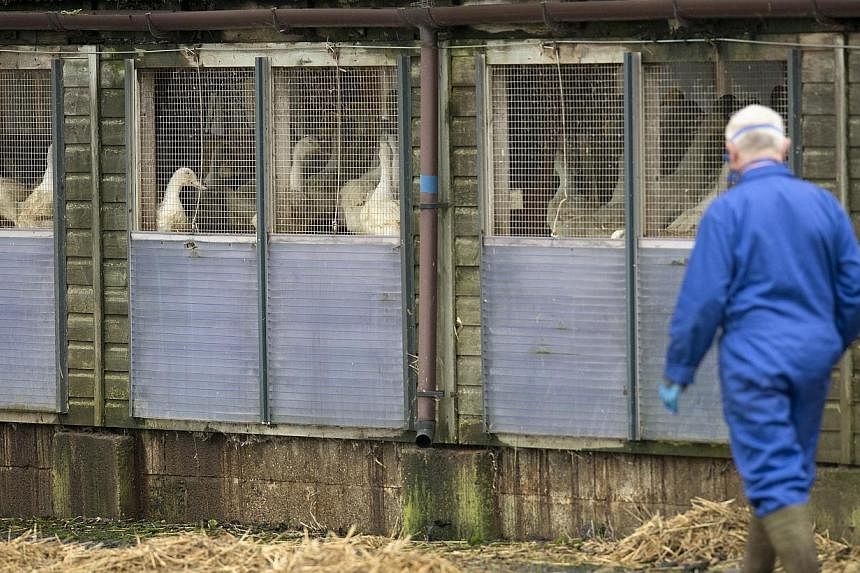Bird flu has resurfaced in the Netherlands, Britain and Egypt.
Dutch authorities discovered the highly contagious strain of H5N8 strain of bird flu at a poultry farm on Sunday and started to cull 150,000 chickens. Read the story here.
The strain has not been reported in humans. An outbreak of this strain in South Korea earlier this year led to the culling of more than 640,000 birds.
On Monday, Britain reported a case of bird flu on a duck breeding farm in northern England while Egypt reported that a woman had died of H5N1 bird flu.
The British government said that its case was not of the deadly H5NI strain and that authorities had set up a restriction zone around the farm in Yorkshire and was culling all the poultry to prevent the spread of the disease. Read the details here.
In Egypt, the 19-year-old woman is the second fatality from the virus this year. There are five other cases in the country. Read the story here.
We look back at other cases of bird flu outbreaks and explain some things about the virus.
Eagle-eyed watch on bird flu radar
This story was first published on Feb 16, 2014.

News that a mutant strain of bird flu - H7N9 - had been detected in neighbouring Malaysia raised alert levels in Singapore.
This particular strain kills one in three patients, causing severe respiratory illness. It was first detected in China in 2013 and had claimed more than 70 lives by February.
The case of bird flu in Kota Kinabalu was a Chinese tourist who had arrived from H7N9 hot spot Guangdong.
Singapore being a top destination for Chinese nationals had prepared H7N9 detection kits in hospitals here for when suspected cases turn up.
South Korea orders bird flu lockdown on poultry farms

This story was first published on Jan 27, 2014.
South Korea was hit by an outbreak of the contagious H5N8 virus in January, its first since an outbreak in 2011 led to the slaughter of more than six million birds.
This year's outbreak happened before the Lunar New Year celebrations, leading to fears that travellers might spread the disease. As a result, authorities ordered a lockdown on affected farms and began comprehensive testing and culling procedures.
Mapping out the H7N9 contagion
This story was first published on Apr 8, 2013
China became the first hotspot for the H7N9 strain. We mapped the number of infections and resulting death toll.
Europe on alert against spread of bird flu virus

This story was first published on May 4, 2003.
The first major outbreak of the H7N7 bird flu strain hit some 200 poultry farms in the Netherlands. Eight cases were also reported in Belgium.
More worryingly, the strain jumped the species barrier for the first time, infecting more than 80 people in the two countries with either a mild flu-like illness or conjunctivitis.
Hong Kong slaughters more than a million chickens

This story was first published on Dec 30, 1997.
An outbreak of H5N1 virus, previously thought to affect only poultry, killed four people and hospitalised 13.
As a result, Hong Kong authorities decided on the drastic measure of culling all poultry in the territory. The exercise cost an estimated $6.6 million as chickens, ducks, geese, pigeons and quail were destroyed.

